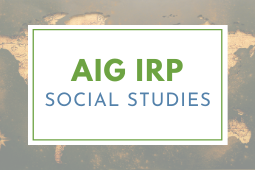Economic Issues Then and Now (AIG IRP)

Overview
During this lesson, students compare and contrast economic factors in the US colonies/states of the 1780’s and present day US. The students explore and discuss issues and problems related to these factors as they compare and contrast these two time periods. This lesson gives students a context for understanding the development of our government as they learn about the time period in which it was first developed and discuss the problems that the founders faced. This lesson was developed by NCDPI as part of the Academically and/or Intellectually Gifted Instructional Resources Project. This lesson plan has been vetted at the state level for standards alignment, AIG focus, and content accuracy.
Lesson Overview
Brief Description of Lesson/Task/Activity: During this lesson, students compare and contrast economic factors in the US colonies/states of the 1780’s and present day US. The students explore and discuss issues and problems related to these factors as they compare and contrast these two time periods. This lesson gives students a context for understanding the development of our government as they learn about the time period in which it was first developed and discuss the problems that the founders faced.
Time Frame: 1 class period
Type of Differentiation for AIGs:
- Extension
- Acceleration
Adaptations for AIGs:
- Content
Explanation of How Resource is Appropriate for AIGs: This lesson requires AIG students to consider advanced content related to economics as they compare and contrast colonial and present times in the US and infer problems faced in the past, the present, and perhaps even the future due to economic factors.
Needed Resources/Materials:
- If the World Were a Village by David J. Smith
- Print and internet resources related to past and current population and economic factors
Stage 1: Engage
Ask the students to brainstorm words that come to mind when they hear the term “economy.” Write their responses for all to see. Does anyone have a guess at the meaning of “economy”? Accept responses and lead the students to understand that “economy” refers to a system of managing resources and assets with a focus on productivity.
Pose and discuss the following types of questions:
- If a country has a healthy economy, what might that look like?
- What if it has an unhealthy economy?
- How can we know the difference?
- What factors about a country might impact its economy?
Ensure that students understand the following types of economic terms: needs, wants, goods, services, natural resources, imports, exports, industries, production, trade, debt.
Introduce and share the book If the World Were a Village, focusing on the following sections: “Welcome to the Global Village,” “Ages,” “Food,” “Money and Possessions,” and “Energy.” Invite the students to share “aha’s” and questions. Ask the students to work in pairs to consider the following questions before discussing them in the whole group:
- How does the information provided relate to economy?
- Is the global village economically healthy? Why do you say so?
- In terms of its economy, what problems does the global village face? How do you know?
Stage 2: Elaborate
Divide the students into small, research groups (no more than 4 students per group) and give them a “Then and Now” chart that includes spaces for the following information: average income, average age, total population, major cities, natural resources, major exports, major imports, major industries, and other information as desired. Assign each group a specific colony that later became a state. Direct the students to find the information using resources available in the classroom (including online). For this task, “then” is any year between 1760 and 1783, and “now” is the current year. Encourage different groups to choose different “then” years.
As the groups complete their research, ask them what types of questions their findings raise and encourage them to look for answers to those questions.
When all of the groups are ready, bring the students together as a whole group to share their findings and discuss the following types of questions:
- What did you find out about “then” that is surprising? How about “now”?
- What seem to be the most significant differences between then and now? How can you account for these differences?
- What factors have remained similar over time?
- What one factor has had the biggest impact on our society? Why?
- Given what you now know about colonial and revolutionary times in the US, what would you say were the biggest problems the founders faced? Why?
- What problems do we face today? Are they different from then? Why?
Stage 3: Evaluate
Working in pairs or small groups, the students will come up with the following: The Top Five Pieces of Advice I Wish I Could Have Given Our Founding Fathers. Remind the students that they need to focus on the economy and the problems that existed then and now related to it. As the students collaborate on their lists, listen for their abilities to infer problems and issues and to suggest possible solutions to them. When the pairs/groups have completed their work, bring all of the students back together to share their lists. As they share and discuss, ask them to consider the following questions:
- Would our advice be helpful today?
- Given what we know about the past and the present, do we think our advice would also be helpful in the future? Why or why not?